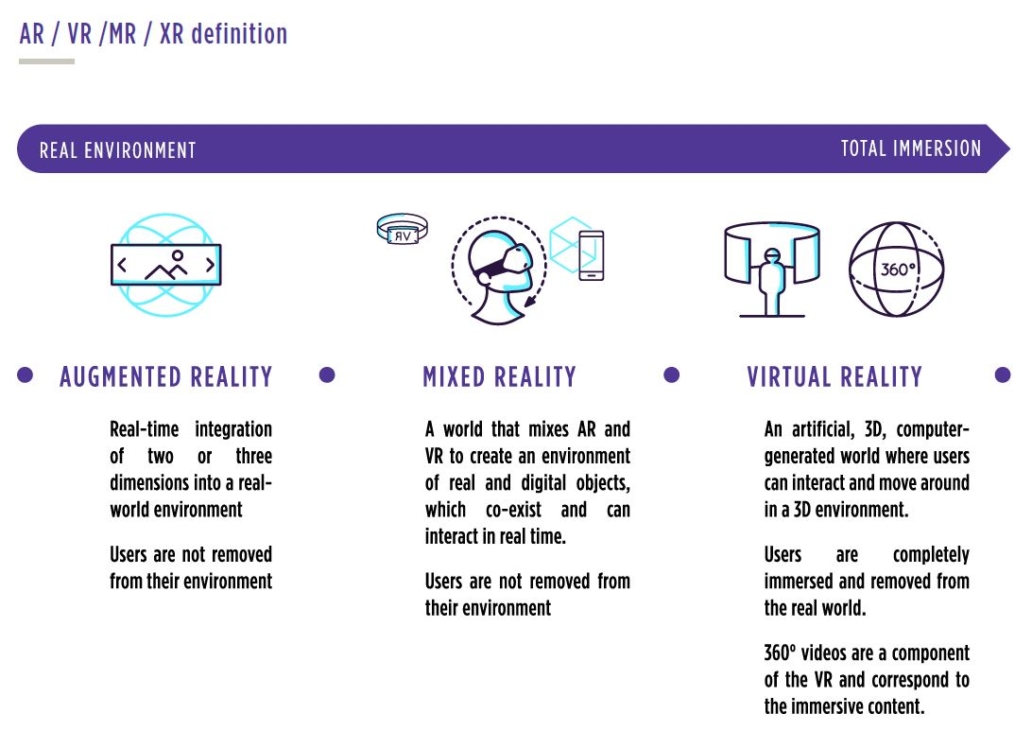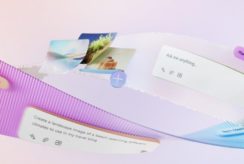The start of 2019 saw a series of events that brought the rapidly evolving world of immersive technologies into focus; there were two in particular: Laval Virtual, Europe’s largest trade show in the field, which brings together nearly 18,000 visitors; and the Mobile World Congress in Barcelona, where Microsoft presented the HoloLens 2, its new mixed reality headset.
More broadly, Augmented Reality (AR) and Virtual Reality (VR) are now essential features of all major technology conferences, a sign of a highly dynamic market. According to IDC1, overall global turnover (including hardware, software, and services) is expected to grow by nearly 70% in 2019 (to over US$20bn, compared with US$12bn in 2018).
What lies behind this keen interest? Principally, the convergence of three factors: the widespread availability of solutions that offer a good user experience at an acceptable cost, the emergence of business models tailored to the corporate market; but, above all, the proof of the value that these technologies can add in several, now proven, use cases.
Virtual technologies are becoming increasingly widespread
The technologies used vary depending on the degree of immersion: AR, VR, MR, or XR?… A quick recap on these is essential before discussing them further: The market for virtual technologies has considerable momentum, with numerous, relevant solutions now being brought to market.
A VR offering reaching maturity at a reasonable cost
In recent months, we’ve seen an increase in VR headset offerings with the appearance of a range of new players—some European, but mostly Chinese (Lenovo, Xiaomi, Huawei, etc.). VR offerings are now nearing maturity and cover a broad range of user needs. There is a raft of available products, all positioned differently within the market (with different price points, uses, etc.).
The AR/MR market: emerging but promising
Despite its promise, the augmented reality market is still struggling to persuade: its offerings still have limited use and fail to address all its intended use cases.
The hardware offering is built around headsets and connected glasses. Manufacturers of glasses are increasing the number of models on the market, but few of these can be used in real business applications due to their numerous limitations: reduced fields of vision, lack of autonomy, heaviness, fragility, etc. Turning to the headsets, while technologically advanced, these remain highly expensive and viable only in experimental contexts.
Relevant business models are emerging which will enable, and better support, AR’s widespread adoption by companies
Conscious of their B2B potential, and the challenges such solutions face, hardware and software providers are working hard to generate services and offerings that will better meet companies’ expectations.
- Tailored equipment offerings for companies: better performing headsets, including guarantees and support (for example, Oculus with its «VR for business» offering)
- Short/medium-term rental services: to test or solve cost issues, but also those of content or experience quality.
- Comprehensive «in situ» services: that offer “mixed reality as a service”— with consultants managing an à la carte menu that includes a set of MR headsets, permanent technological upgrades, incident management, user support, etc.
- SaaS platforms to create and share VR or AR content (such as Orange’s VR experience platform or Facebook’s Spaces—the virtual reality social network)
Confirmed business use cases
Immersive technologies can offer real value, which centers around four main types of use case:




